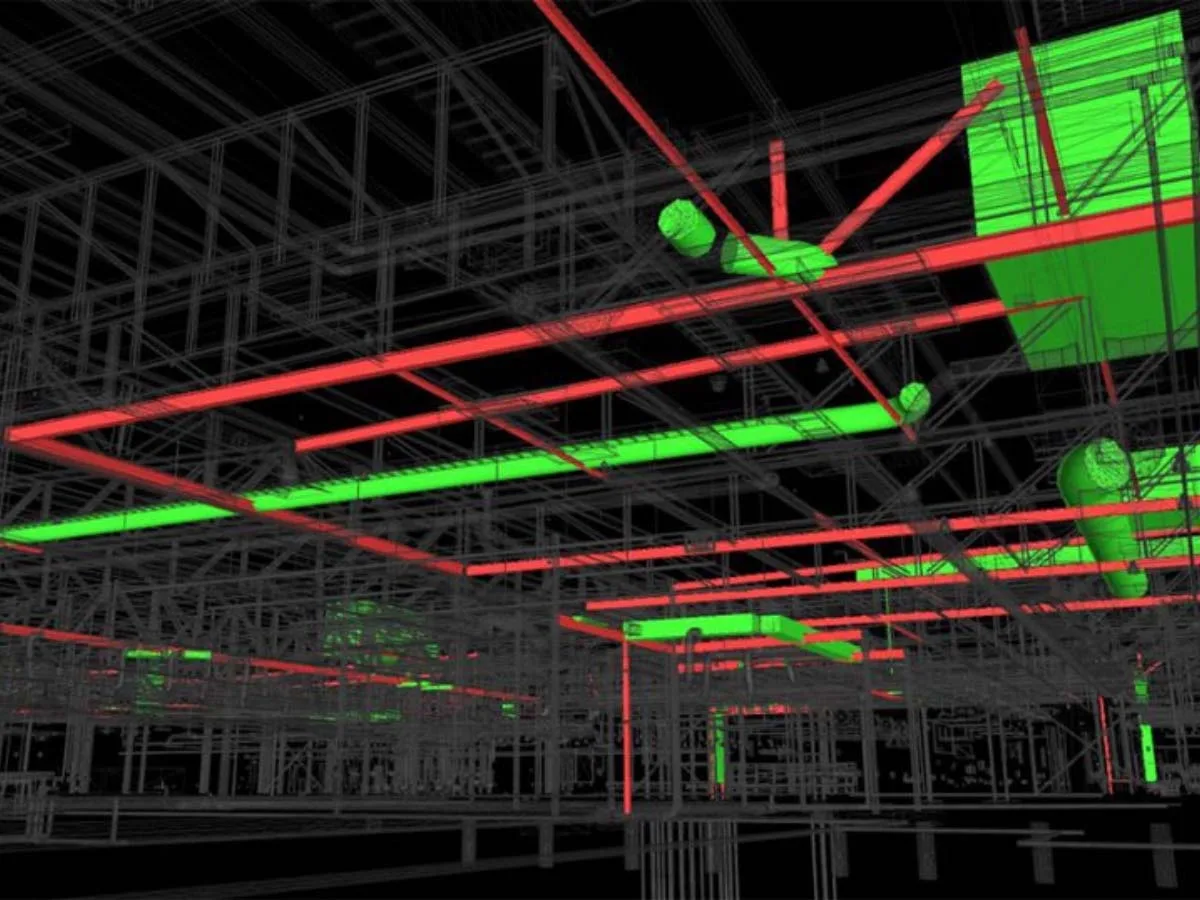Introduction
Building Information Modeling (BIM) plays an important role in clash detection. Its advanced capabilities allow for the creation of detailed 3D models that accurately depict all aspects of a building or infrastructure project.
BIM software includes clash detection tools that automatically identify clashes or conflicts between different elements within the model. These clashes could involve structural elements intersecting with mechanical systems, ductwork conflicting with electrical wiring or other similar issues.
What Is BIM?
Building Information Modeling (BIM) is a sophisticated digital process that involves the creation and management of detailed 3D models for buildings or infrastructure projects. BIM encompasses the entire lifecycle of a construction project, from initial planning and design to construction and operation. The digital model contains both geometric and non-geometric information, providing a comprehensive view of the project.
Reason Of BIM Adoption Among SME’s
There are several reasons why BIM adoption has increased among SMEs. You need to be well aware of it if you want to enhance your architectural business to a greater level. Some of the key factors of it are as follows:-
1. Offers Competitive Advantage
SMEs often face stiff competition in the construction industry. Adopting BIM allows them to differentiate themselves by offering advanced capabilities in design, coordination, and project delivery. This can help SMEs win more contracts and compete effectively with larger firms.
2. Efficiency & Cost Savings
BIM enables SMEs to streamline their workflows, improve collaboration, and reduce errors and rework during the construction process. By using BIM, SMEs can optimize resource utilization, minimize material wastage, and ultimately save costs throughout the project lifecycle.
3. Enhanced Collaboration
BIM facilitates collaboration among project stakeholders, including architects, engineers, contractors, and clients. SMEs can leverage BIM to communicate and coordinate more effectively with other team members, leading to smoother project delivery and improved client satisfaction.
4. Access To New Markets
Many clients, particularly in sectors such as government, infrastructure, and large-scale commercial projects, require BIM capabilities for their projects. By adopting BIM, SMEs can access new markets and opportunities that may have been previously inaccessible without this technology.
5. Having Regulatory Requirements
In some regions, government regulations and industry standards are increasingly mandating the use of BIM for certain types of construction projects. SMEs may adopt BIM to comply with these requirements and ensure they remain competitive in the marketplace.
6. Improves Project Quality
BIM enables SMEs to create more detailed and accurate designs, leading to higher-quality construction outcomes. By using BIM for clash detection, design analysis, and visualization, SMEs can identify and resolve issues early in the project lifecycle, resulting in better-built environments.
FAQ
1. What Is The Purpose Of BIM Clash Detection?
The purpose of BIM clash detection is to identify and resolve conflicts or clashes between different building components within a construction project’s digital model. These clashes occur when elements such as structural beams, pipes, ducts, electrical conduits, and architectural features intersect or occupy the same space improperly.
2. What Level Is BIM Clash Detection?
In the United States, there isn’t a standardized BIM maturity level framework akin to the UK’s BIM Level 2 framework. Instead, BIM adoption and practices can vary across projects and organizations. However, clash detection in the USA is typically associated with advanced BIM practices and is often implemented in projects where BIM is used extensively.
3. What Is The Responsibility Of Clash Detection?
The responsibility of clash detection lies primarily with the project team involved in the design, coordination, and construction phases of a building or infrastructure project.
4. What Are The Types Of BIM Clash Detection?
BIM clash detection involves identifying and resolving conflicts or clashes between different building components within a construction project’s digital model. These clashes can occur between various architectural, structural, mechanical, electrical, plumbing, and other systems. Different types of clash detection focus on specific areas or disciplines within the project.
5. Who Is Responsible For Clash Detection In BIM?
In Building Information Modeling (BIM) projects, the responsibility for clash detection is typically distributed among various stakeholders involved in the design, coordination, and construction phases. The specific individuals or roles responsible for clash detection may vary depending on the project’s size, complexity, and organizational structure.





